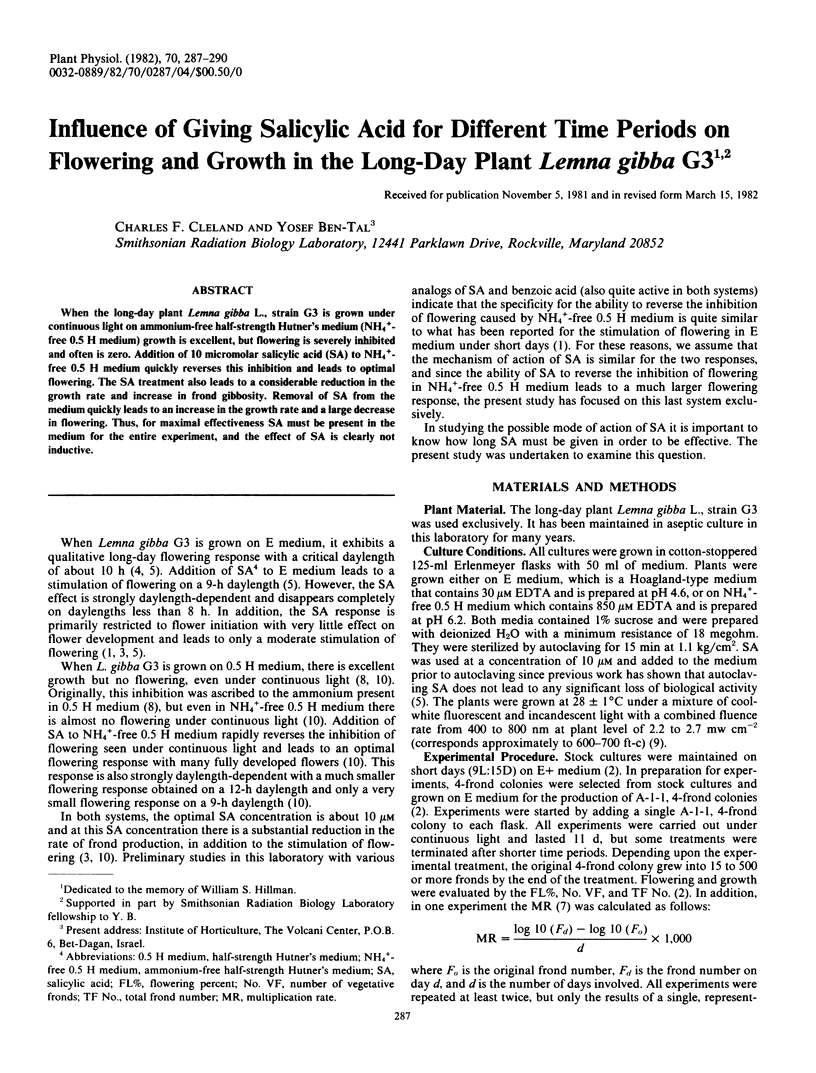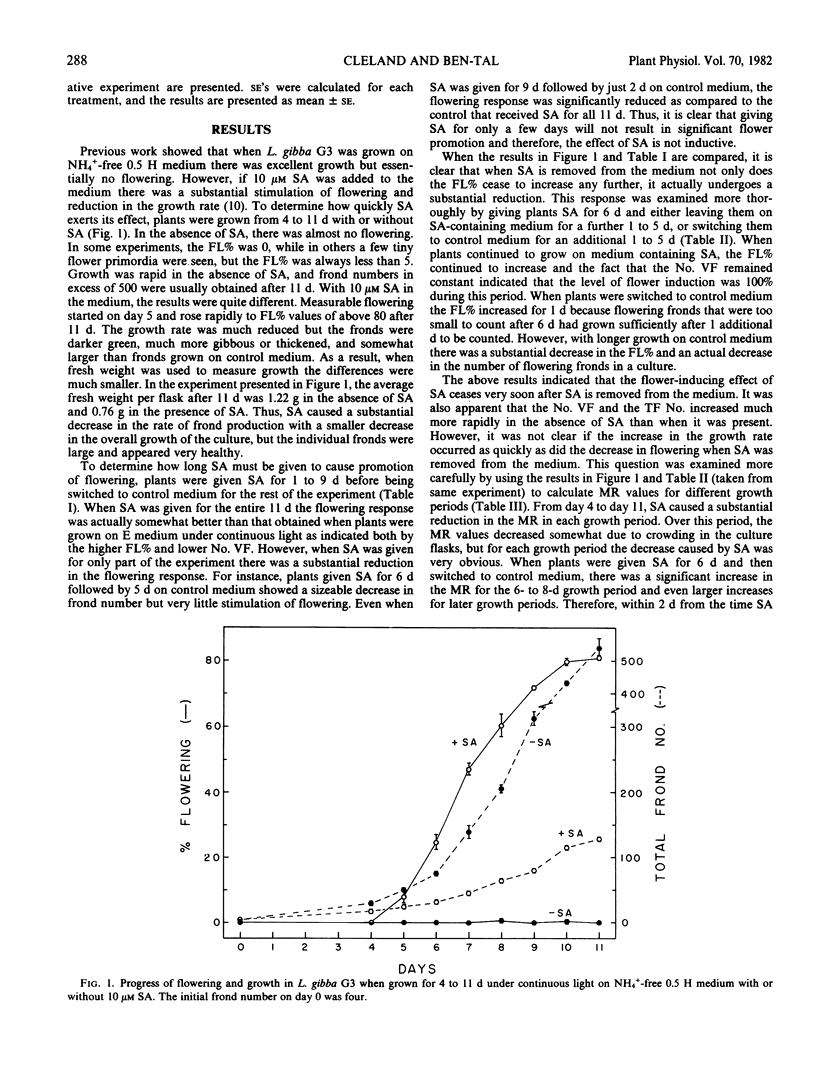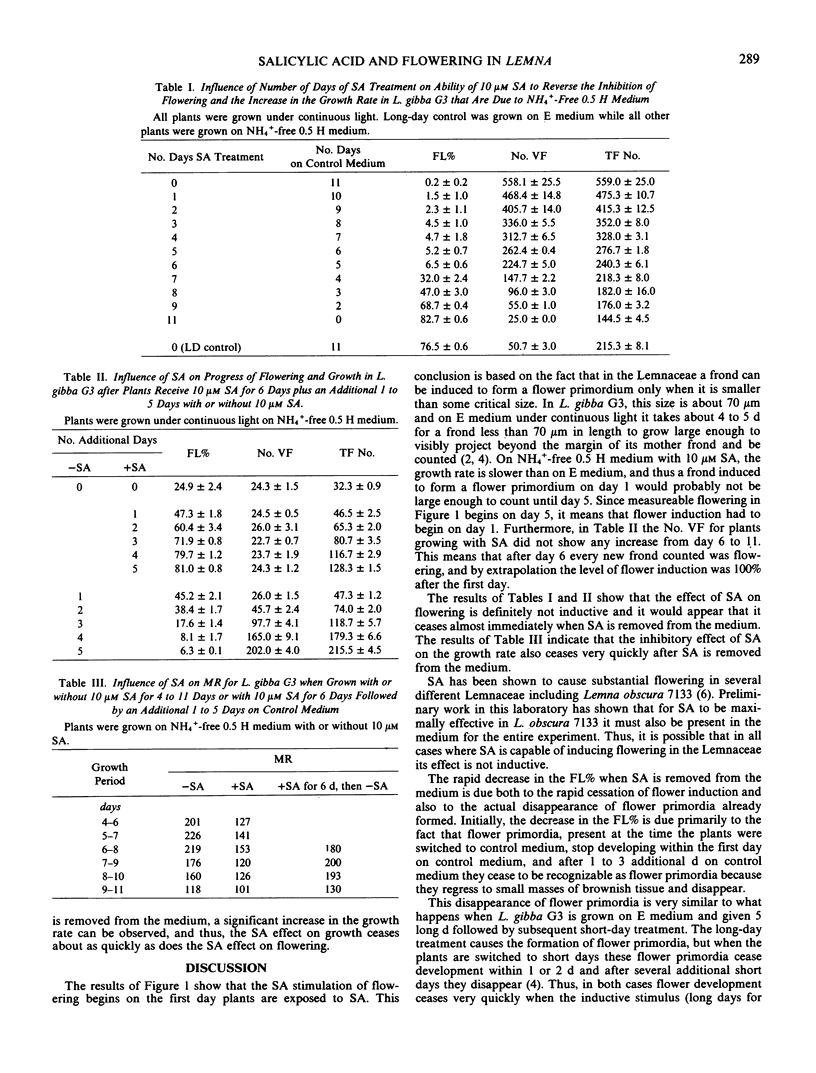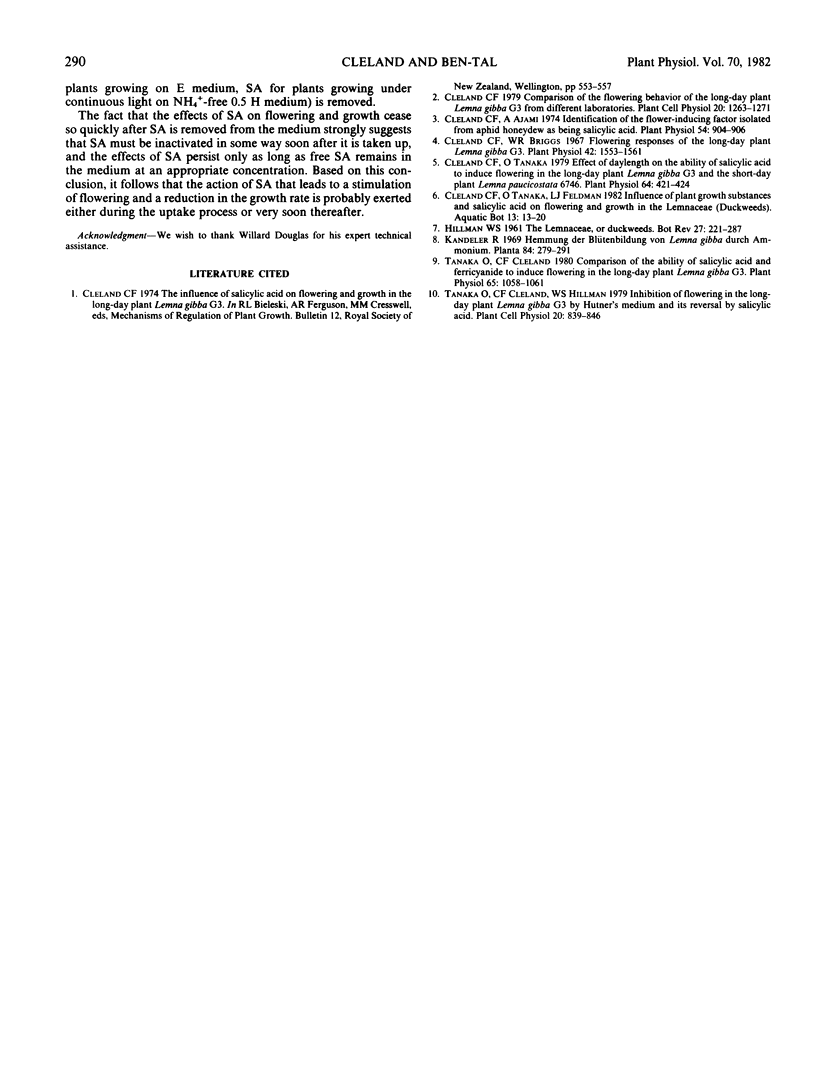Abstract
When the long-day plant Lemna gibba L., strain G3 is grown under continuous light on ammonium-free half-strength Hutner's medium (NH4+-free 0.5 H medium) growth is excellent, but flowering is severely inhibited and often is zero. Addition of 10 micromolar salicylic acid (SA) to NH4+-free 0.5 H medium quickly reverses this inhibition and leads to optimal flowering. The SA treatment also leads to a considerable reduction in the growth rate and increase in frond gibbosity. Removal of SA from the medium quickly leads to an increase in the growth rate and a large decrease in flowering. Thus, for maximal effectiveness SA must be present in the medium for the entire experiment, and the effect of SA is clearly not inductive.
Full text
PDF



Selected References
These references are in PubMed. This may not be the complete list of references from this article.
- Cleland C. F., Ajami A. Identification of the Flower-inducing Factor Isolated from Aphid Honeydew as being Salicylic Acid. Plant Physiol. 1974 Dec;54(6):904–906. doi: 10.1104/pp.54.6.904. [DOI] [PMC free article] [PubMed] [Google Scholar]
- Cleland C. F., Briggs W. R. Flowering Responses of the Long-day Plant Lemna gibba G3. Plant Physiol. 1967 Nov;42(11):1553–1561. doi: 10.1104/pp.42.11.1553. [DOI] [PMC free article] [PubMed] [Google Scholar]
- Cleland C. F., Tanaka O. Effect of Daylength on the Ability of Salicylic Acid to Induce Flowering in the Long-day Plant Lemna gibba G3 and the Short-day Plant Lemna paucicostata 6746. Plant Physiol. 1979 Sep;64(3):421–424. doi: 10.1104/pp.64.3.421. [DOI] [PMC free article] [PubMed] [Google Scholar]
- Tanaka O., Cleland C. F. Comparison of the Ability of Salicylic Acid and Ferricyanide to Induce Flowering in the Long-day Plant, Lemna Gibba G3. Plant Physiol. 1980 Jun;65(6):1058–1061. doi: 10.1104/pp.65.6.1058. [DOI] [PMC free article] [PubMed] [Google Scholar]


